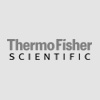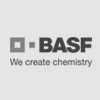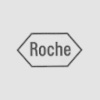Dissociation of Organisms from Crypto and Giardia IMS Beads
ImmunoMagnetic Separation( IMS) technology is a powerful methodology that utilizes antibody-coated paramagnetic beads to detect, isolate, enrich, and quantify an array of microbial organisms from large volume fluid samples. For example, EPA Method 1623 describes a procedure to isolate and quantify Cryptosporidium and Giardia from source water using paramagnetic beads coated with specific antibodies. For this particular application, the organisms must be dissociated from the beads and transferred to a microscope slide for fixation, fluorescent antibody staining, and enumeration by fluorescence microscopy. A key step in the process is the acidic dissociation of the organisms (0.1 N HCl) from the antibody/bead complex and the quantitative transfer of the organisms to a glass slide. This step is then followed by neutralization of the acid with 1 N NaOH. The success of this technique is largely dependent on the effectiveness of the neutralization process, which can be compromised by differences in sample matrix buffering capacities as well as pipetting accuracy. Small changes in pH away from neutrality can dramatically affect the fluorescent signal.
Because of the effects of pH on fluorescent staining dissociation, processes such as heat denaturation (80°C) have been suggested as possible alternatives to acid dissociation and neutralization (Downey, A. S. and T. K. Graczyk, 2007).
For some IMS applications, it is not necessary to perform a dissociation step, since the measurement can be made in the presence of the beads or the beads can be removed at a later step in the process. For example, viable bacteria enriched by IMS can be transferred directly to a variety of culture media without the dissociation of the bacteria from the beads. Likewise, viable bacterial detection can be achieved by measuring ATP from bacteria/bead complexes that have been lysed to release intracellular ATP (Bushon, R. M., C. Likirdopulos and A. M. G. Brady, 2009).
References:
EPA Method 1623 (https://www.epa.gov/sites/production/files/2015-07/documents/epa-1623.pdf)
Downey, A. S. and T. K. Graczyk (2007). Appl. Environ. Microbiol. 73(21): 6910-6915. https://doi.org/10.1016/j.mimet.2003.06.001
Bushon, R. M., C. Likirdopulos and A. M. G. Brady (2009). Water Research 43 (19): 4940-4946. https://www.virusys.com/documents/Bushon_2009_Water-Research.pdf
















